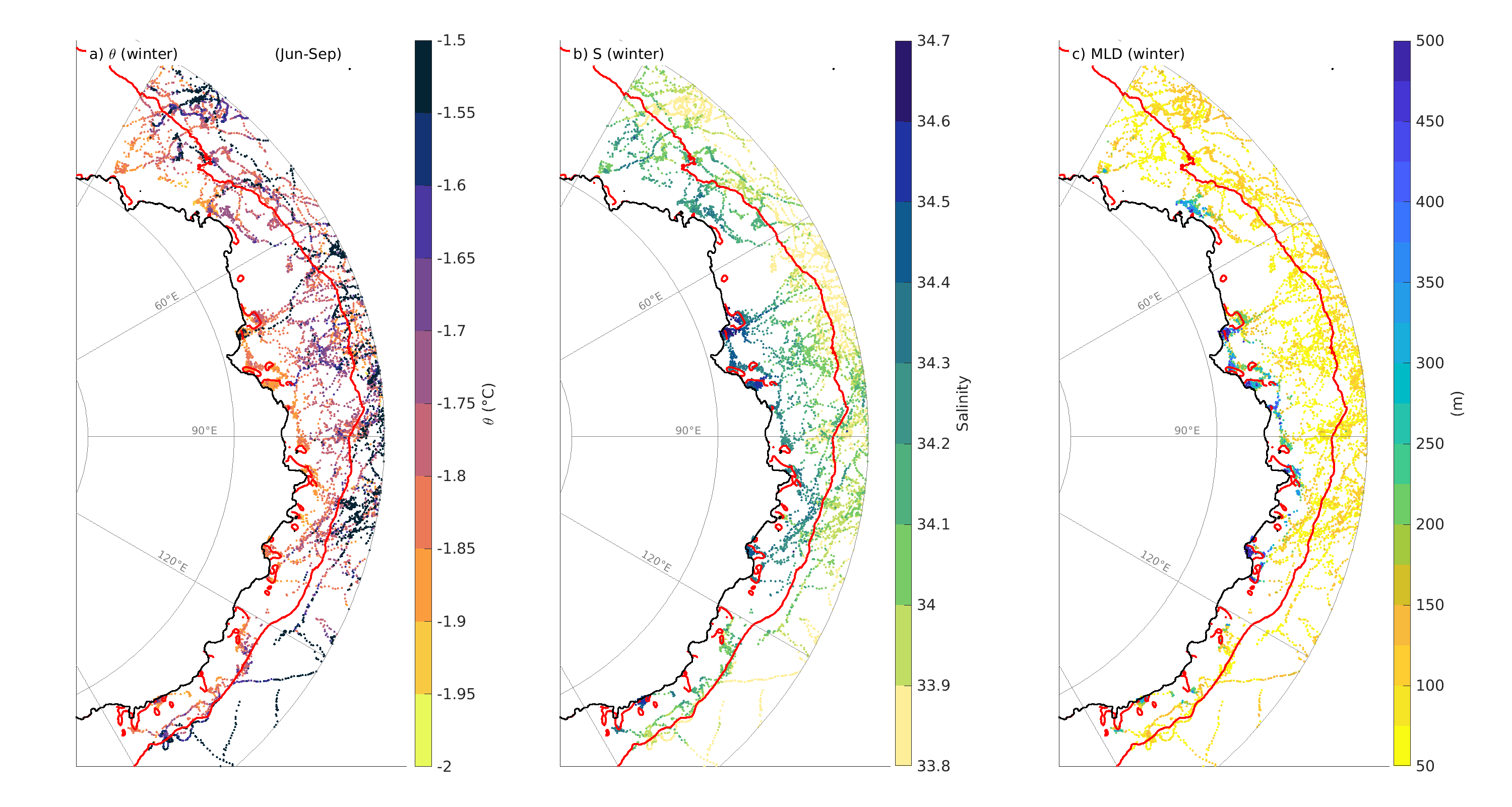EARTH SCIENCE | BIOLOGICAL CLASSIFICATION | ANIMALS/VERTEBRATES | MAMMALS | CARNIVORES | SEALS/SEA LIONS/WALRUSES
Type of resources
Topics
Keywords
Contact for the resource
Provided by
Years
-
Satellite linked data loggers collecting temperature, conductivity, depth, location and time using Sea Mammal Research Unit tags.
-
This meta data describes the raw output of the SES DEB-IBM built in NetLogo (version 6.0.1, March 2017; available from http://modelingcommons.org/browse/one_model/5348). The raw output consists of .csv files from several model runs. The detailed explanation of the model workings and background are published in Goedegebuure et al. (2018, PLoS ONE; Modelling southern elephant seals Mirounga leonina using an individual-based model coupled with a dynamic energy budget; DOI: 10.1371/journal.pone.0194950). In short: we developed an individual-based model which is coupled with a dynamic energy budget (a DEB-IBM) for southern elephant seals to demonstrate a method for detailed representation of marine mammals. We aimed to develop a model which could i) simulate energy use and life histories, as well as breeding traits of southern elephant seals in an emergent manner, ii) project a stable population over time, and iii) have realistic population dynamics and structure based on emergent life history features (such as age at first breeding, lifespan, fecundity and (yearling) survival). We evaluated the model's ability to represent a stable population over long time periods (> 10 generations), including the sensitivity of the emergent properties to variations in key parameters. The model was developed using life history data of female southern elephant seals from Macquarie Island and follows individuals from birth to death. The information collected in the raw output are the same for the baseline model (stable, and with standard parameters), and the modified models to test for 1) low, and 2) high food availability, 3) low, and 4) high weaning thresholds (energetic level at which pups transition to juveniles), 5) low, and 6) high puberty thresholds (energetic level at which juveniles transition to physically mature adults). As well as recording the parameter values as set in the model, each .csv file records: 1) run number (usually 1-10) 2) step (time step, days) 3) min age at first breeding (years) 4) min age of adult 5) mean age of adult 6) mean age of juvenile 7) max age of individuals 8) max number of pups per female 9) fecundity 10) max size of individuals 11) mean size of adults 12) mean size of juveniles 13) total count of modelled population 14) total count of embryos 15) total count of pups 16) total count of yearlings 17) total count of juveniles (includes yearlings) 18) total count of adults 19) mean food availability of independent individuals (those not reliant on their mother) that are not fasting/moulting 20) carrying capacity (or expected equilibrium) 21) seed NB. NetLogo calls individuals within the model turtles - thus output will mention turtles. Stages are as follows 0 = foetus, 1 = pup, 2 = juvenile, 3 = adult. Status are as follows, 0 = dependent on mother, 1 = fasting, 2 = foraging.
-
To quantify the winter diving behaviour and vertical habitat use of adult female Antarctic fur seals (Arctocephalus gazella) we tracked females using Wildlife Computers Time-Depth Recorders (TDRs). Females were captured towards the end of the lactation period (March/April) and the TDR was attached dorsally to the fur approximately 10 cm anterior to the rump using a two-part epoxy. TDRs were retrieved just prior to or after giving birth the following season. Data files were extracted from the tags using the Wildlife Computers software Instrument Helper.
-

This is a collection of data in East Antarctica from Southern Elephant seal's between 2004 and 2009. The monthly data set has been further classified by polynya and year. Additionally, we provide a dataset of the polynyas contours defined following a criteria of 75% of sea-ice concentration for each individual month between 2004 and 2019. Data are provided in .mat format
-
Raw time series of depth, water temperature, light and swim speed. Stomach temperature and heart rate are available in some instances, but the data is sparse. Data was collected using time/depth recorders and satellite telemetry. Ancillary location was recorded from a separate logger.
 IMAS Metadata Catalogue
IMAS Metadata Catalogue